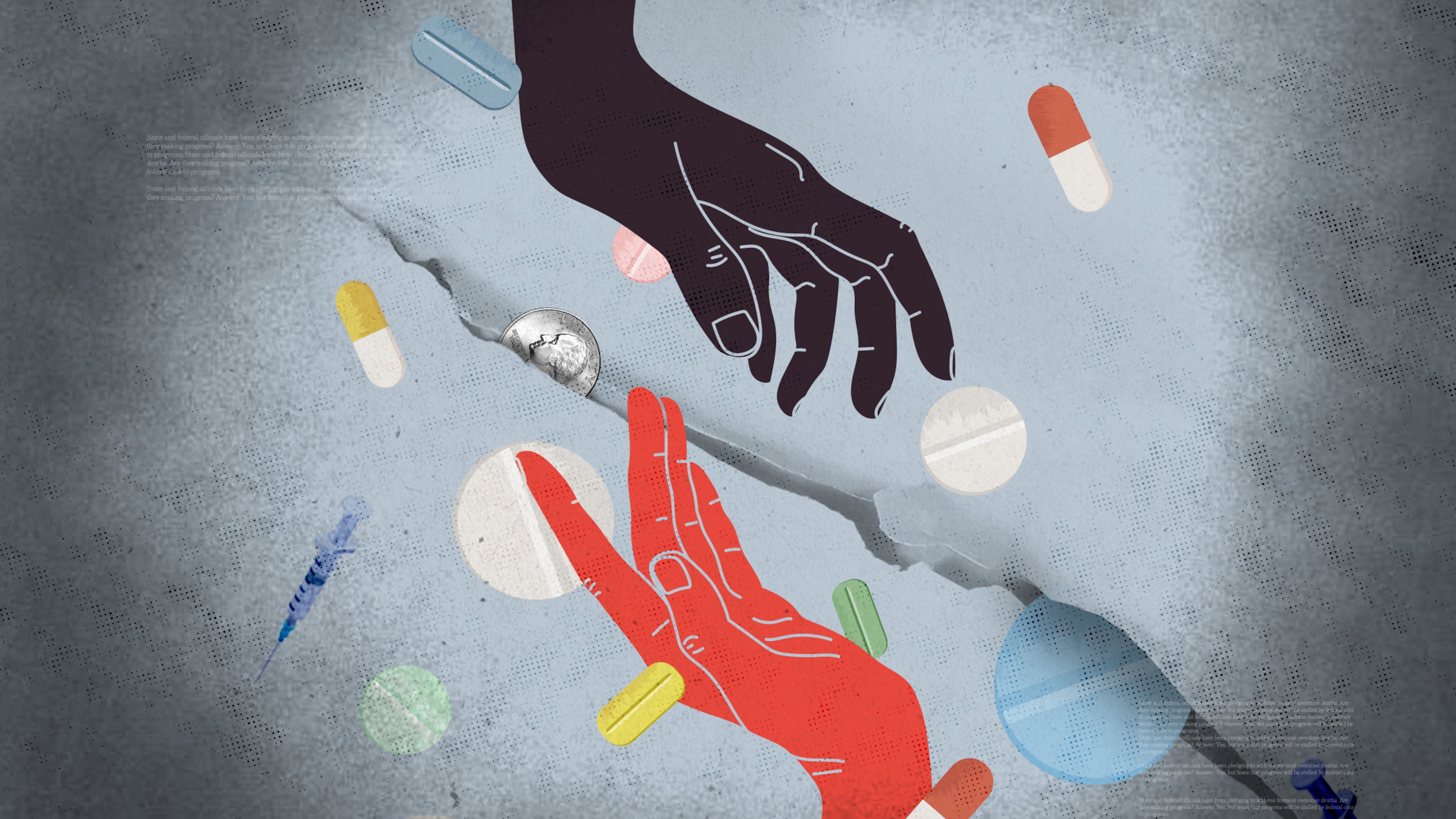Opioid overdose deaths have fallen in recent years, but will that last?

Deaths in Georgia from opioid overdoses fell by nearly a third from 2023 to 2024, a sign showing the state is making headway on the decades-long opioid crisis.
But that progress, reflected in provisional data from the Centers for Disease Control and Prevention, comes as federal cuts for drug treatment programs and Medicaid could disrupt access to treatment and reverse that downward trend.
The opioid crisis began decades ago, first with addictive painkillers and later with street drugs, such as heroin. And in 2013, overdose deaths involving fentanyl, often laced with other illicit drugs, and other synthetic opioids surged. Since then, the deadly synthetic opioid has played a significant role in fueling the crisis.
The situation reached new heights during the COVID-19 pandemic when deaths soared before seeing a decline in 2023.
Reining in fentanyl is a priority of President Donald Trump. The president has levied tariffs on Canada and Mexico, citing the trafficking of the drug from those countries as a national security risk — despite relatively modest levels of fentanyl trafficking from Canada. He has signed legislation classifying fentanyl-related substances as Schedule 1 drugs, the same classification as highly addictive substances such as heroin.
In a May announcement, the CDC praised the president for declaring the opioid crisis a public health emergency in 2017 and providing the government more resources to fight the drug problem.
But despite Trump’s tough talk, public health experts are concerned that drastic changes to the government under the Trump administration could undermine efforts to fight fentanyl and other opioids.
“All of the pressure that we’re seeing from the federal government is going to have an effect on local communities,” said Stephen Patrick, chair of the Department of Health Policy and Management at Emory University’s Rollins School of Public Health. “I do think we’re going to see problems.”
In March, Health and Human Services Secretary Robert F. Kennedy Jr. announced plans to dissolve several agencies within HHS and fold them into the new Administration for a Healthy America. One of the agencies cut is the Substance Abuse and Mental Health Services Administration, which supports mental health services and addiction treatment across the country through grants to states and nonprofits providing mental health and addiction services.
Under the Trump administration, hundreds have left SAMHSA through layoffs and departures, and the administration has slashed grants administered by the agency. Legal battles seeking to stop cuts to HHS are ongoing.
If the president’s proposed 2026 budget is approved, the agency would lose more than $1 billion in funding.
“When we see cuts to public health, federally, it all trickles down,” Patrick said.
He said that the federal changes could result in fewer resources for local nonprofits and recovery groups.
The overhaul and proposed funding cuts are causing anxiety among some treatment providers. Charles Sperling, who runs a DeKalb-based recovery center, said past SAMHSA grant funds provided a housing program that helped immerse clients in treatment.
“The longer a person can stay in a structured treatment environment, the better their outcomes are,” he said.
Without that, he said, it would lead to less effective patient outcomes and be detrimental for recovery groups across the state.
The cuts could also make it harder to track opioid deaths. In June, SAMHSA stopped collecting data for a national surveillance system that monitored drug use trends and emergency department visits.
Why have deaths declined?
The declining death rates mark a turning point in a crisis that has been building for decades. And although there could be many factors contributing to the progress, experts say they aren’t certain about which variables are most successful.
“Anybody who tells you they have one answer to that is not telling the truth,” said Allison Arwady, the CDC’s injury center director. “It’s very multifactorial.”
But public health experts attribute some of the decline to federal and state policies that have paid for drug treatment, fentanyl test strips and naloxone, an opioid overdose antidote.
In Georgia, state lawmakers passed a bill last year making naloxone more readily available in government buildings, schools and on college campuses. The law also allows for vending machines to dispense opioid reversal drugs.
Some experts also fear the death rates have been high for so long that one reason for the recent decline could be that there are fewer people at risk of overdose.
“We’ve simply had so many people die of an overdose that they’re not there anymore to be counted,” Patrick said.
Others credit it to a crack down by law enforcement.
Earlier this year, Georgia Gov. Brian Kemp signed into law one of Lt. Gov. Burt Jones’ priority bills — Senate Bill 79 — that increased mandatory minimum sentences for fentanyl trafficking. The measure expanded on a 2024 law that created a new category of felony aggravated involuntary manslaughter under which drug dealers and distributors can be prosecuted.
It’s not just Georgia. States across the Southeast — including Alabama, Florida, South Carolina, Tennessee and Mississippi — have enacted similar laws aimed at cracking down on fentanyl distribution in recent years.
Whatever the reasons, Georgia consistently had among the lowest death rates in the Southeast from opioids from 2019 to 2024.
Arwady, the CDC’s injury center director, said that while public safety-centered policy approaches can aid in preventing some deaths, they are more effective when paired with drug prevention and diversion strategies.
Despite funding concerns, she said she’s confident that addressing the opioid crisis will remain a priority of the Trump administration.
Medicaid
Cuts to Medicaid are another worry. Trump’s “big, beautiful bill” will slash $1 trillion from the program over 10 years.
Those cuts in the House version of the bill, researchers estimate, will cause 156,000 people nationwide to lose access to treatment. Researchers at Boston University and the University of Pennsylvania sent a letter to House Speaker Mike Johnson saying that overdose rates among that group would likely double.
“We are in a very tenuous time at this point for federal funding for all kinds of mental health and addiction services,” said state Rep. Mary Margaret Oliver, D-Decatur.
Whether the state will backfill the billions in federal funding projected to be lost to Georgia’s state health programs because of the federal spending law is unclear.
Republican leaders in the state Legislature say replacing that lost funding with state revenues is unsustainable and not likely to happen.
Although policymakers have taken steps toward curbing fentanyl overdoses and deaths have dropped since 2023, recent counts are still much higher than they were before the pandemic, with deaths in Georgia increasing by about 50% from 2019 to 2024.


